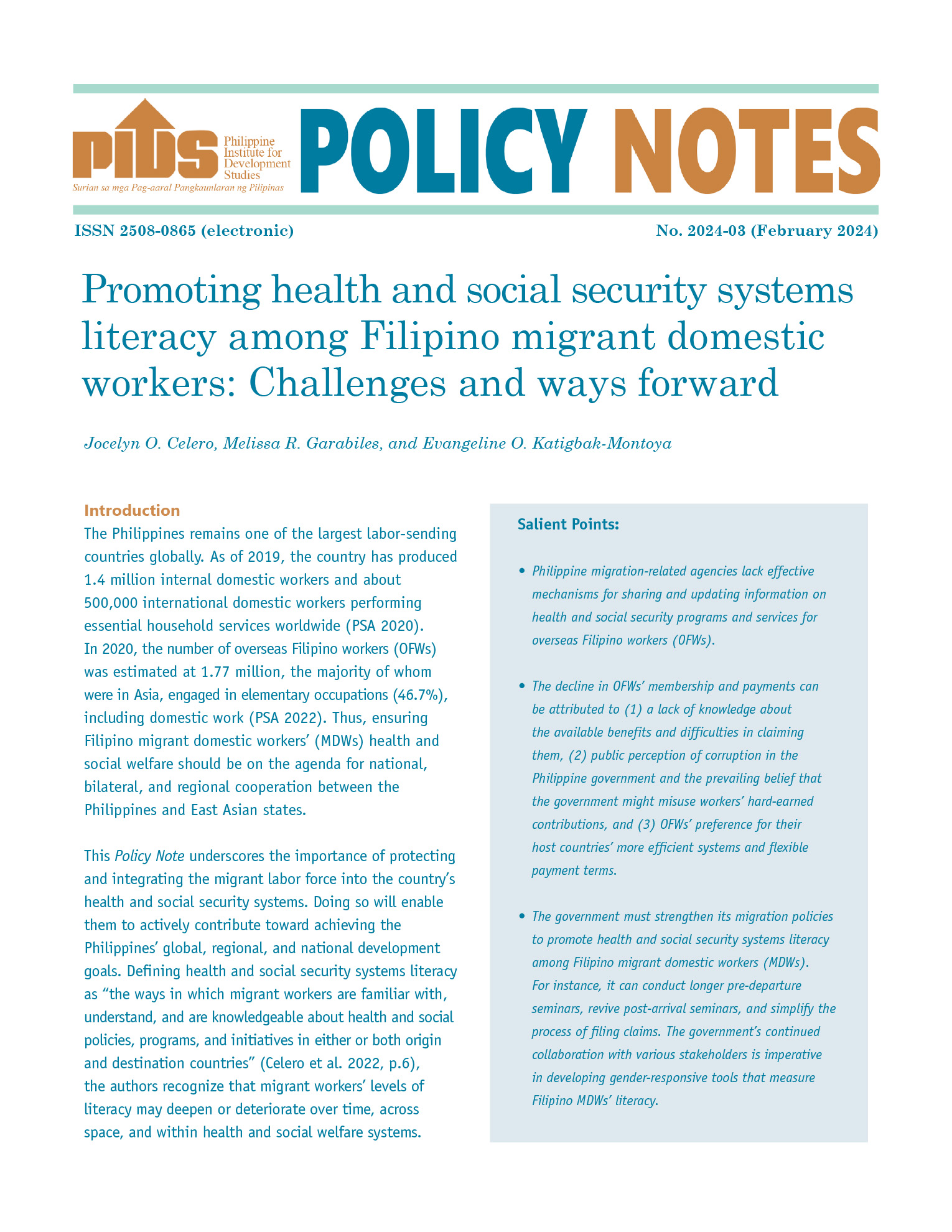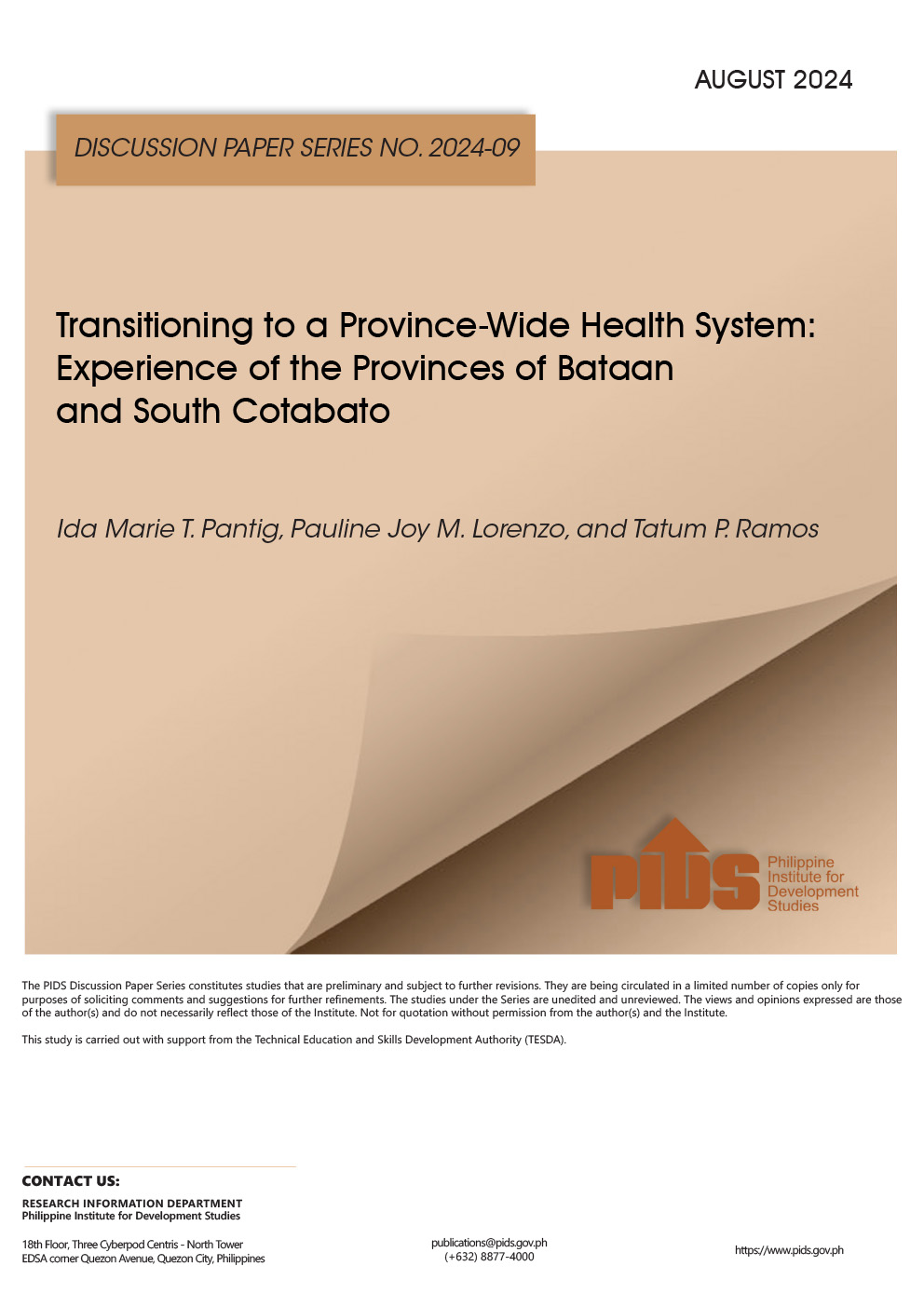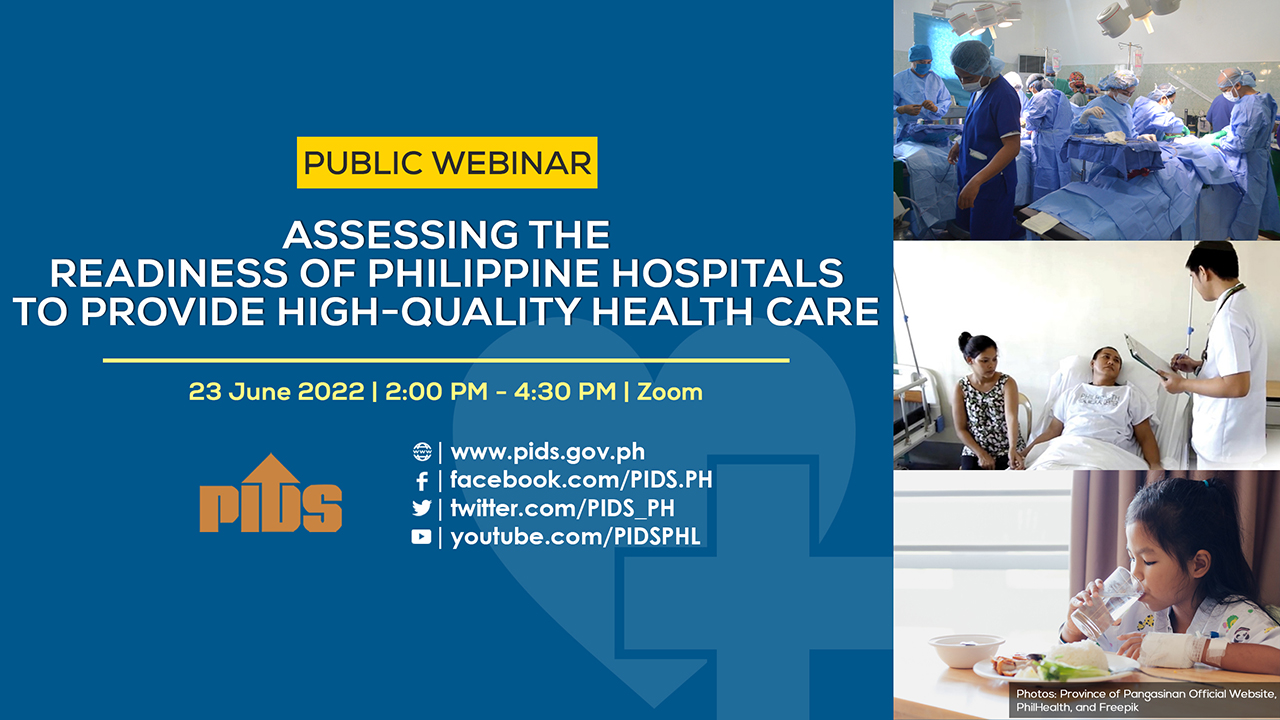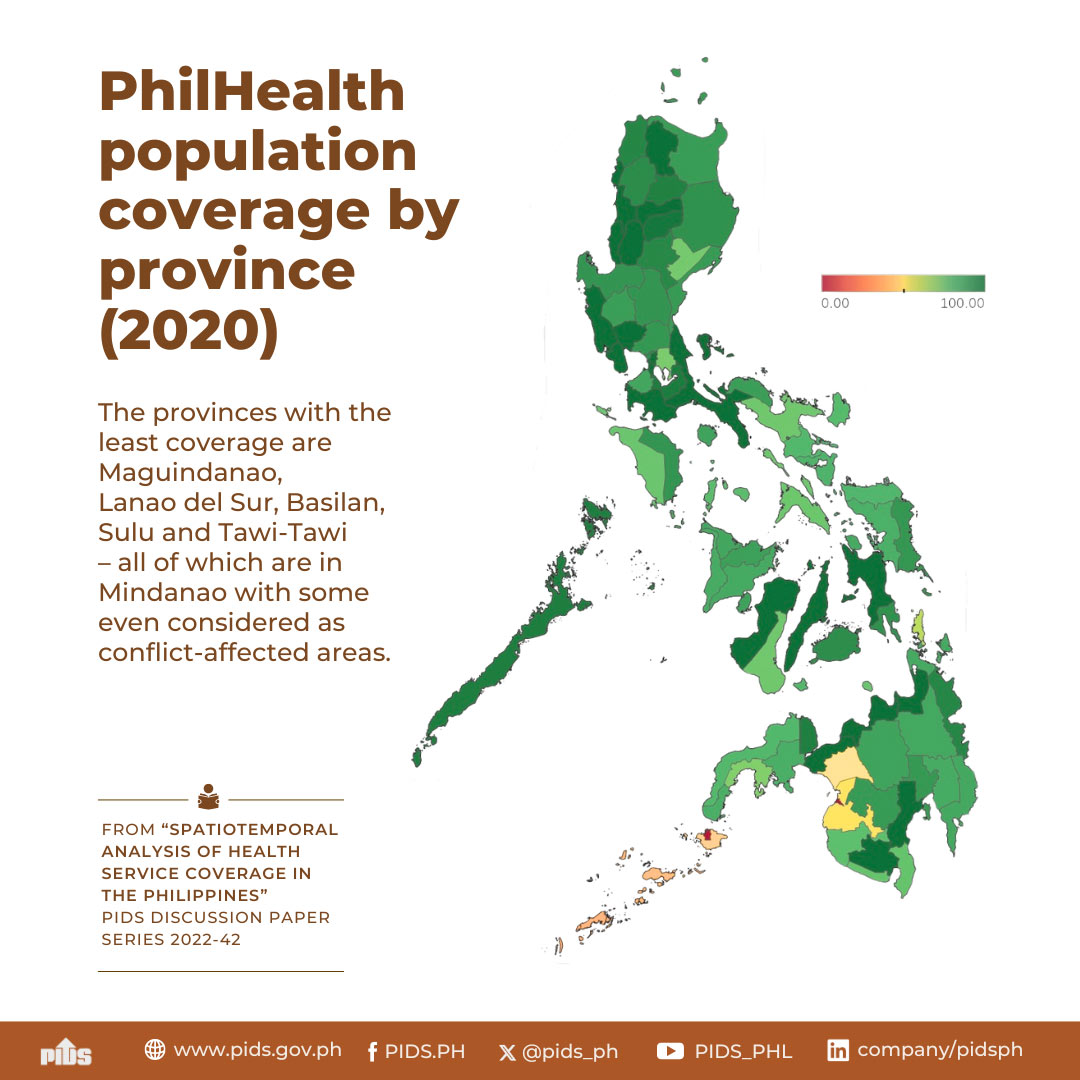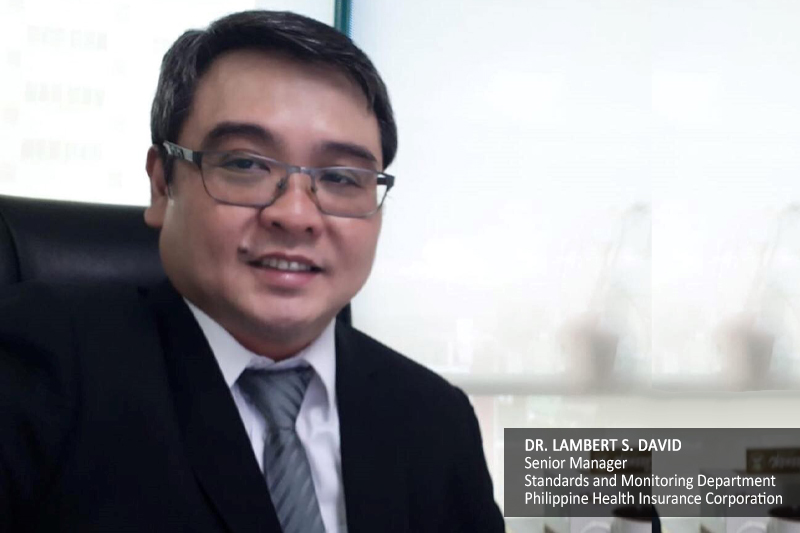
The COVID-19 pandemic has affected the operational capacity of the Philippine Health Insurance Corporation (PhilHealth), which is mandated under Republic Act 11469 or the Bayanihan to Heal as One Act to shoulder all the medical expenses of public and private health workers in case of exposure to the virus.
This was revealed by Lambert David, senior manager of PhilHealth’s Standards and Monitoring Department, during a webinar recently organized by the Philippine Institute for Development Studies (PIDS). The webinar featured the findings of the PIDS study “The Multifaceted Health Impacts of the COVID-19 Pandemic” authored by PIDS Senior Research Fellow Valerie Gilbert Ulep.
“We have been [experiencing] some backlogs in claims payment, and there are many contributory factors, one of which is the [human resource] complement in PhilHealth,” David explained.
At present, David said around 990 personnel are processing claims nationwide from 2019 to 2021, and so far, there has been no increase in personnel complement.
“A lot of our employees got quarantined, isolated, and several died from COVID-19. Some of those [who] died are doctors, so we have doctors [evaluating the claims who died],” David explained.
“The COVID-19 pandemic has really impacted PhilHealth, which hindered our operational capacity to give service to our providers,” David added.
The number of claims that PhilHealth has received also increased, according to David. From 2020 to August 2021, a 26-percent increase in “daily received claims nationwide” was observed.
Meanwhile, David also responded to one of the findings of the featured PIDS study on the declining healthcare services in the country amid the pandemic.
He said that while there is an observed decrease in health services utilization, this is applicable to some regions only, particularly the National Capital Region (NCR), where most COVID-19 cases are located.
“The claims for other conditions, like the Top 12 high-burden diseases, [are] decreasing in the NCR, but the number of COVID-19 cases is the highest [here] nationwide. So, the decrease in claims or hospitalization for the high-burden diseases might not apply nationwide but on a regional basis [only], most likely to the [NCR].”
David likewise agreed with Ulep that the observed decline in healthcare services could be attributed to both demand- and supply-side issues. The demand-side issues, Ulep mentioned, include safety concerns, reduced income, and mobility restrictions, while the supply-side issues are overrun health facilities and reallocation of resources to COVID-19 response.
David underscored that formulating policies to address these issues should come not only from the health sector but also from other sectors, such as transport and information and communications technology. ###
You may watch the webinar at https://fb.watch/9SNUFagRym/ or https://youtu.be/Ia3oWEMOgv4.
For more videos of PIDS events, go to https://www.pids.gov.ph/videos.
This was revealed by Lambert David, senior manager of PhilHealth’s Standards and Monitoring Department, during a webinar recently organized by the Philippine Institute for Development Studies (PIDS). The webinar featured the findings of the PIDS study “The Multifaceted Health Impacts of the COVID-19 Pandemic” authored by PIDS Senior Research Fellow Valerie Gilbert Ulep.
“We have been [experiencing] some backlogs in claims payment, and there are many contributory factors, one of which is the [human resource] complement in PhilHealth,” David explained.
At present, David said around 990 personnel are processing claims nationwide from 2019 to 2021, and so far, there has been no increase in personnel complement.
“A lot of our employees got quarantined, isolated, and several died from COVID-19. Some of those [who] died are doctors, so we have doctors [evaluating the claims who died],” David explained.
“The COVID-19 pandemic has really impacted PhilHealth, which hindered our operational capacity to give service to our providers,” David added.
The number of claims that PhilHealth has received also increased, according to David. From 2020 to August 2021, a 26-percent increase in “daily received claims nationwide” was observed.
Meanwhile, David also responded to one of the findings of the featured PIDS study on the declining healthcare services in the country amid the pandemic.
He said that while there is an observed decrease in health services utilization, this is applicable to some regions only, particularly the National Capital Region (NCR), where most COVID-19 cases are located.
“The claims for other conditions, like the Top 12 high-burden diseases, [are] decreasing in the NCR, but the number of COVID-19 cases is the highest [here] nationwide. So, the decrease in claims or hospitalization for the high-burden diseases might not apply nationwide but on a regional basis [only], most likely to the [NCR].”
David likewise agreed with Ulep that the observed decline in healthcare services could be attributed to both demand- and supply-side issues. The demand-side issues, Ulep mentioned, include safety concerns, reduced income, and mobility restrictions, while the supply-side issues are overrun health facilities and reallocation of resources to COVID-19 response.
David underscored that formulating policies to address these issues should come not only from the health sector but also from other sectors, such as transport and information and communications technology. ###
You may watch the webinar at https://fb.watch/9SNUFagRym/ or https://youtu.be/Ia3oWEMOgv4.
For more videos of PIDS events, go to https://www.pids.gov.ph/videos.


